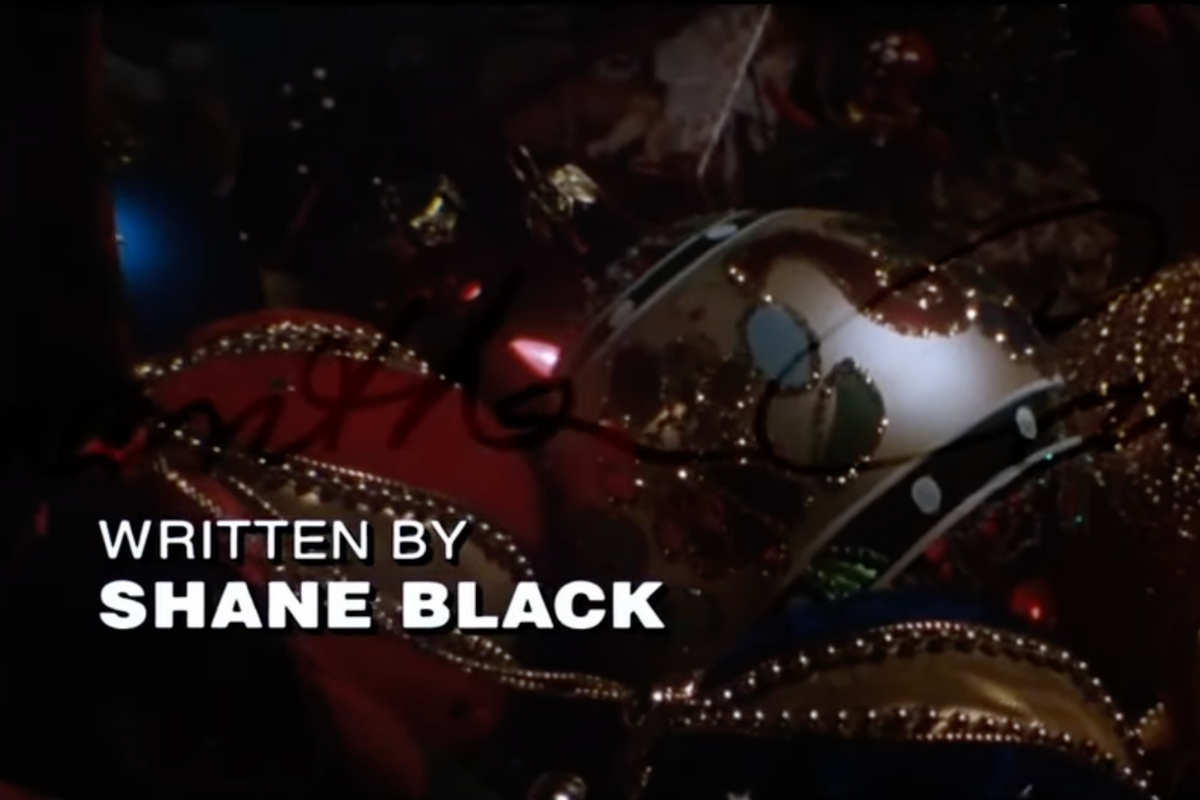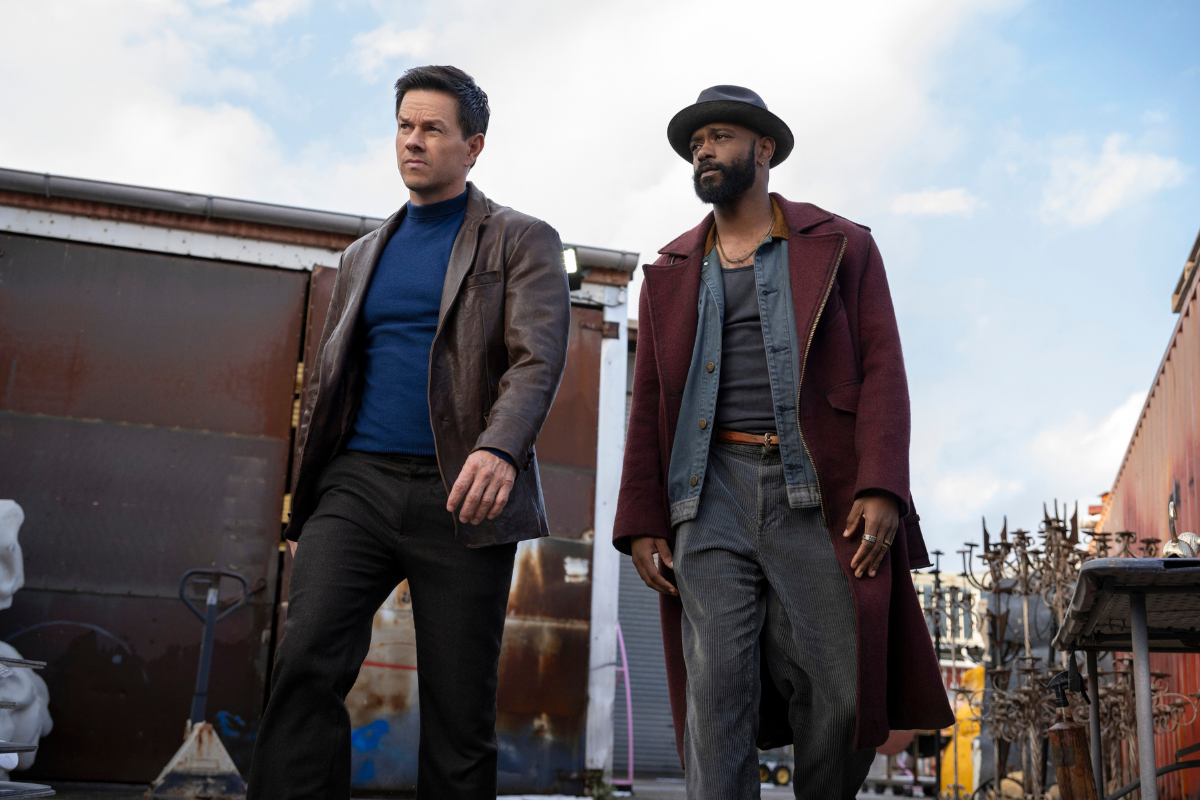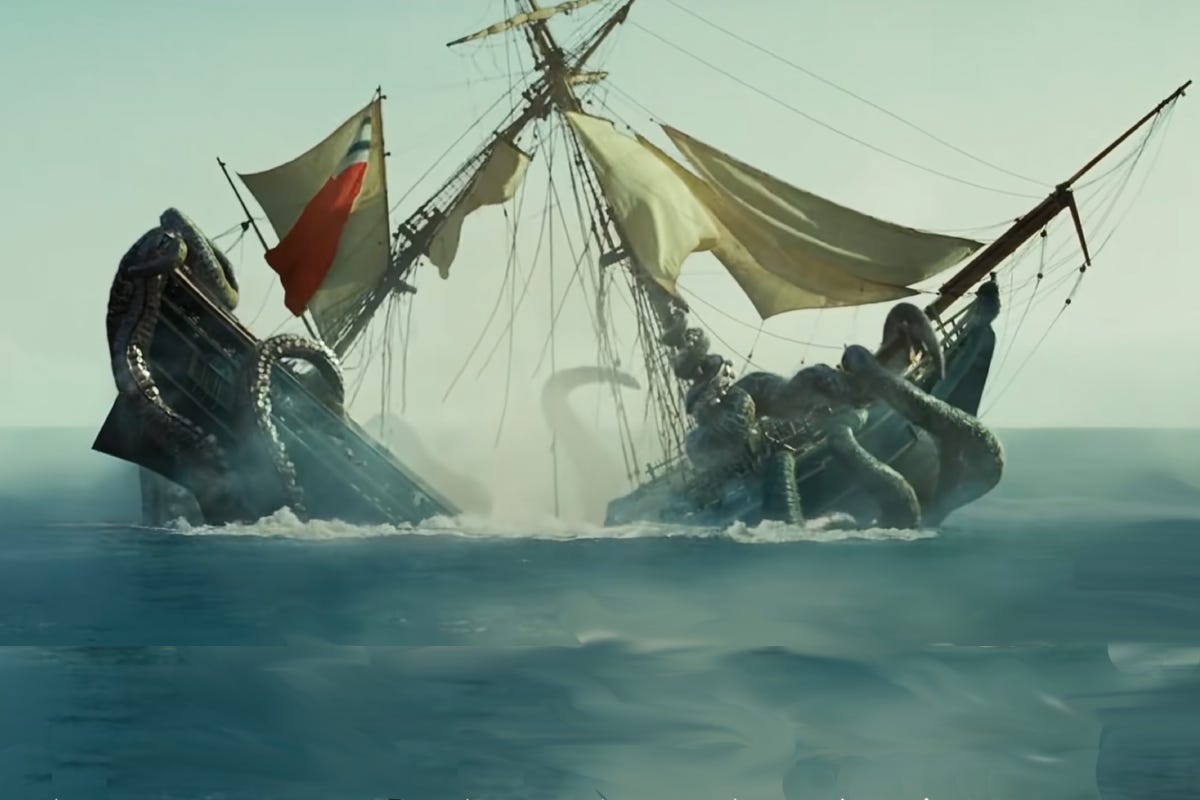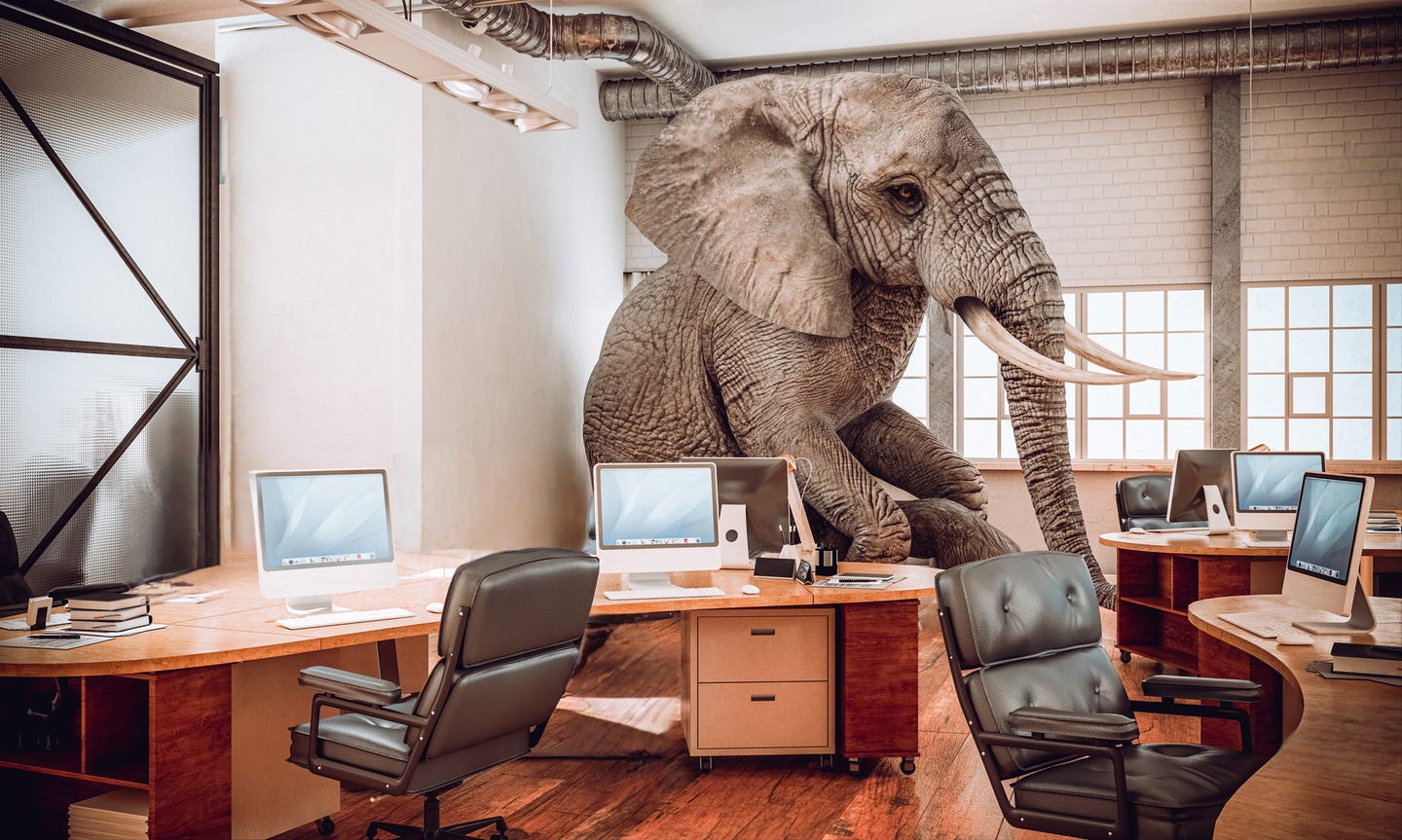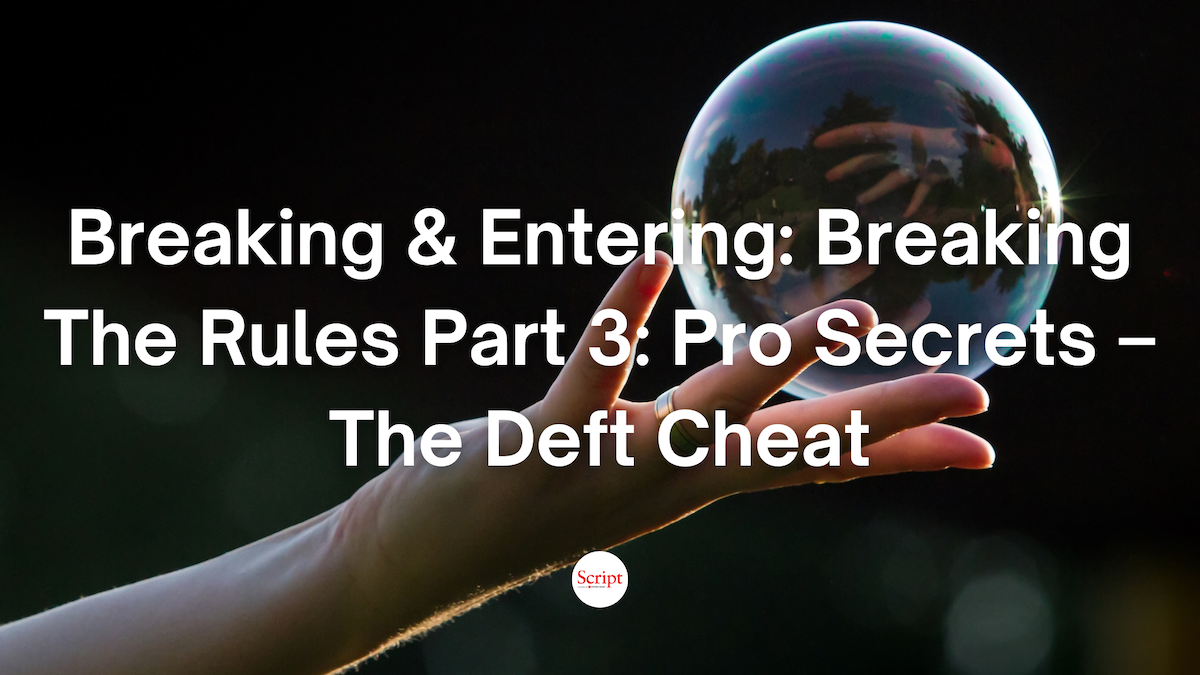Breaking & Entering: Terrific Trios – The Power of Three Characters – The Rule of Threes Part 2
Use character trios to add depth to your script. Barri Evins offers up examples and pointers to create rich characters, complex conflicts, and resonant themes.
My first column this three part series, “Create Story Magic With The Rule of Threes,” explored why this is such a powerful tool to add to your writing arsenal. Three is the smallest number for our brains to discern a pattern and recognize it as significant. Three is meaningful across cultures and mediums. Three feels complete and satisfying to us.
Part One hinted at the enduring use of three characters throughout storytelling, from nursery rhymes and fairy tales, to timeless classics and film franchises. Now we’re going to dig into why this works and how to use to add depth and richness to your screenwriting.
When it comes to characters and the Rule of Threes, there are two time-tested patterns that are proven to be both effective and impactful: a character plus three companions, and the character trio.
One Plus Three
In this case, One Plus Three does not merely equal four. It is actually something bigger than the sum of its parts. It is a powerful formula for creating a cast of primary characters that contrast and thereby enhance each other’s attributes, offer a variety of roles so that everyone in the audience finds someone they can identify with, and support resonant themes. It’s a terrific option for any adventure, quest, or journey, as well as across popular genres.
The works of prolific 19th-century French playwright and novelist Alexandre Dumas have been translated into 100 languages and made into more than 200 films. I’ve previously referenced his novel, The Three Musketeers, in discussing “The Art of Surprise,” disabusing the lament that “There are no new stories,” as appealing tales are retold time and again, and reinvented in fresh and exhilarating ways.
The Three Musketeers, a historical adventure published in 1844 about a young man who leaves home, eager to join an elite force fighting for justice and finds enduring friendship, has been told in endless versions and in all imaginable mediums. Beginning with Dumas’ own public readings which boosted the book’s popularity, the novel has been staged as plays and musicals. It has been filmed at least once and often many times in every decade since the invention of the medium over 100 years ago – first as a silent film in 1903, and even a 3D version in 2011 directed by Paul W. S. Anderson, written by Alex Litvak and Andrew Davies, with clock-punk elements. It has also been the basis of TV series, video games, board games, numerous animated films, and films and mini-series from around the world.
As for reinvention, I’m certain you can think of another epic action adventure that begins with a young man who leaves home, eager to join an elite fighting force, although the one I’m thinking of was set in a galaxy far, far away
One + Three = More
This classic illustrates the enduring power of One Plus Three, with all four roles being archetypes – universally recognizable characters. “Archetype” combines the Ancient Greek word for “to begin” with the word for type, meaning a model or pattern. Thus, archetypes are the “original pattern.”
Character archetypes exist and recur throughout all forms of storytelling. They are readily understood, as they present a familiar pattern that reflects traits that are clearly recognizable based on our experiences, and often reflect aspects of ourselves. Note that they are not stereotypes, which are simplistic, more closely aligned with a caricature. Strong archetypes have depth and complexity, and spring from the world of their story.
The main character often stands in for us, the audience. The three primary characters that accompany them on their journey represent different character archetypes.
The Three Musketeers is enduring because bringing these archetypes together forms a pattern that is familiar, cohesive, and offers endless variations. It is endearing because we recognize, respond to, and root for the characters.
D'Artagnan is The Protagonist. A seeker who must prove themselves worthy. They may be young, energetic and naïve. Often considered instinctive and impulsive, they must rise to the challenge and excel by their wits and their passion.
Athos is A Mentor. A leader, they are honorable and virtuous, providing a moral compass for the group, although they may hide a secret from their past.
Aramis is The Thinker. Intellectual, analytical, strategic. A cunning charmer.
Porthos is The Fool or Jester. They might be gullible, and often serve as comic relief, but they are loyal and honest, unexpectedly speaking important truths.
They are better together, stronger as a team than individuals. This is underscored in the Musketeer motto: “One for all and all for one, united we stand and divided we fall.”
This is such a solid formula that it has been repeated endlessly, from classic films like The Wizard of Oz, to contemporary comedies, such as The Hangover. I’ve always maintained that The Hangover has a surprising amount of similarities to The Wizard of Oz. Yes, really. I can almost hear you scoffing at my comparison of those two films. Patience please, I will prove it.
In The Wizard of Oz, based on L. Frank Baum’s children’s novel published in 1900, the three characters work to help Dorothy through a strange land, including Lions and Tigers and Bears, Oh My, as well as overcoming a sleep-inducing drugged poppy field, on her quest to get back home to Kansas. In the hugely successful contemporary comedy, the three characters struggle through the outlandish world of Las Vegas after a drug-induced memory loss forces them to retrace their steps to find Doug and get him home in time for his wedding.
The Hangover, written by Jon Lucas & Scott Moore, was inspired by a true bachelor party story. Zack Galifianakis as Alan is child-like, unaware of social graces, and adds humor. Similar to the Scarecrow, he wants to be smart. Ed Helms as Stu worries about what everyone thinks, and struggles to stand up to his controlling and philandering girlfriend, desperately needing courage like the Cowardly Lion. Bradley Cooper’s Phil, the flippant, married private school teacher like the Tin Woodman, needs a heart.
In both stories, the characters ultimately get what they want and need, and they had it within them all along. Their quest and the journey they take together brought it out.
One Plus Three is also an extremely appealing and successful television sitcom formula that spans the test of time.
Three Equals One
The turn of the last century brought new focus in the scientific community to examine what makes us human. This gave rise to the field of psychoanalysis, pioneered by Sigmund Freud, with the source of conflict being within ourselves. Although Freud’s work was controversial, the advent of psychoanalytic theory is considered one of the dominant forces shaping twentieth-century thought. And, therefore, it informed storytelling as well.
Freud theorized that human personality was comprised of three elements: the id, the ego, and the superego, which evolve as we develop from birth onward. How they interact informs how humans behave.
THE ID is primitive and instinctual. It is infantile or child-like. It is driven by needs and desires, and operates on a subconscious level, meaning without thought. It seeks pleasure and wants immediate gratification. Its focus is MEETING BASIC NEEDS. Think of it like a baby who cries when hungry or wet.
THE EGO is realistic, and part of our conscious awareness. While the id’s demands are unconscious, unrealistic, or unacceptable, the ego’s goal is to fulfill those desires in a way that accounts for reality. It assesses situations and weighs the pros and cons of taking an action. Its function is DEALING WITH REALITY. Think of it as our core self.
THE SUPEREGO is idealistic, made up of all the internalized beliefs, values, and morals that people learn from their parents and their society. It strives for moral behavior. It comprises our conscience and the idealized version of ourselves that we aspire to. It is based on morals and judgments about right and wrong. It strives to UPHOLD OUR HIGHEST VALUES. Think of it as that voice whispering in your ear, pushing and prodding you to do more and better. You should be more kind, eat healthier, and turn out more pages!
The key is in understanding how they interact. Stuck in the middle, the ego serves as the mediator trying to strike a balance between the demands of the id, the ideals of the superego, and reality.
In storytelling, this often translates to three primary characters each embodying one of these aspects of personality. This helps focus characters and shapes the narrative, whether or not the audience realizes it. We see “The Freudian Trio” in One Plus Three stories, as well as in the trio story. In fact, as Doug is literally missing from the majority of the film, The Hangover would be considered a Trio Story. Alan symbolizes the child-like id. Stu exemplifies the superego, worrying about what others think and struggling to live up to his girlfriend’s expectations. Phil represents the ego, the leader of the pack, the voice of reason mediating between the two. When there is a primary protagonist in a trio, they often but not always represent the ego.
The Freudian Trio brings internal and character-driven conflict into focus. The deep, inherent personality clashes can drive both drama and comedy to great effect. It brings depth to characters from their backstory to their clothing. The Trio provides opportunities bolster the theme, presenting different perspectives that highlight the writer’s point of view on the message of theme.
In Sex and the City created by Darren Star, based on the book by Candace Bushnell, these three personality types are sharply personified and provide countless storylines, with complex internal and external conflicts, as well as conflicts within the group. It’s easy to see protagonist Carrie, played by Sarah Jessica Parker, as the Everywoman, looking for love, and representing the viewers, which is underscored by her addressing us in narration.
Kim Cattrall's Samantha is pure impulse, an id in spike heels and plunging necklines, hungry for immediate gratification, utterly unconcerned with convention.
Attorney Miranda, played by Cynthia Nixon, represents intellect, and is constantly battling her feelings versus her values, concerned with being realistic in the role of the ego, often attempting to moderate the other extremes.
Charlotte, with her idealized versions of love and romance, represents the superego with strong feelings about right and wrong. Played by Kristin Davis, this character may seem foolish at times, but she has courage and heart, along with moments of deep insight.
Scripts crafted around the three personality types offer immense opportunities to convey the message of the film that matters to the writer.
The landmark horror movie Jaws, known for launching the summer blockbuster, is based on the novel by Peter Benchley and written by Benchley and Carl Gottlieb. Protagonist, Brody (Roy Scheider), is the idealistic superego, the police chief intent on protecting people – but he has a crippling fear of the water. Hooper (Richard Dreyfuss) is the impulsive, thrill-seeking id, fearless when it comes to the water. Quint (Robert Shaw), is the ego, drawing on his experience to be realistic about the dangers faced by man on the water, out of our natural element, and respecting its dangers. All three characters reflect different points of view on the theme of the film that revolves entirely around fear. Find a deep dive into the foundation of Jaws and how each character contributed their own perspective on the theme here.
In the crime thriller Se7en written by Andrew Kevin Walker and set against the backdrop of an anonymous, bleak, and corrupt city, Somerset (Morgan Freeman) is the analytical, thinking ego, Mills (Brad Pitt) is the naïve, optimistic, emotional id acting on impulse, John Doe (Kevin Spacey) is the superego, self-controlled, judgmental and, in this case, manipulating Mills to prove his point that sin exists within us all. In a story rooted in the Seven Deadly Sins, the plot revolves around morality versus pervasive corruption, moral decay, and apathy – a good versus evil story that questions whether change is possible.
In the original Star Trek sci-fi TV series, it’s clear that William Shatner’s Captain Kirk is the realistic ego, while Leonard Nimoy’s ever so logical Vulcan, unhindered by human emotion, represents the superego. Dr. McCoy, played by DeForest Kelley is emotionally reactive, like the id. A perfect set up for series creator Gene Roddenberry to explore stories reflecting his humanist views and personal philosophy.
Perhaps one of the most enduring and endearing trios in literature and film is from the massively popular Harry Potter YA fantasy series by J.K. Rowling, which sparked eight films, all box office hits. These distinctive characters, with their deep bonds of friendship despite their differences, are utterly complimentary. They are sometimes referred to by fans as “The Golden Trio,” and representing the mind, body, and soul.
Harry is the ego and the soul. Hermione is the superego and the mind. Ron is the id or the body.
Trios are tremendously engaging to audiences because we see something of ourselves reflected in the roles, and root for the characters to succeed, or at least to do better.
You might have noticed, that I repeatedly underscore that the primary characters offer an incredible opportunity to express themes that are personal to you. I researched the lives of as many of the writers referenced in my examples, and mentioned how the theme of their stories was connected to what matter to them personally. I believe that all strong writers who have developed a voice, that most sought after characteristic, are absolutely clear on the themes that matter to them and drive their work. I've interviewed many A-Listers, and not one has hesitated when asked this question. I find their answers fascinating, and think you will too. Read more in my blog, "Screenwriters Speak."
I hope you’ve begun to notice the pervasiveness of the Rule of Threes in your everyday life, and that you’re beginning to apply this principle to make your storytelling engaging, intriguing, and memorable
Now you can add One Plus Three and Character Trios as you begin to craft and shape your stories, focusing your cast, defining their roles, and using them to express your larger message.
Up next: The Rule of Threes Part Three: Pack A Punch with the Three-peat – Plot, Description, and Dialogue!
Learn more about the craft and business of screenwriting and television writing from The Writers Store!
Barri Evins draws on decades of industry experience to give writers practical advice on elevating their craft and advancing their career. Her next SCREENWRITING ELEVATED online seminar with 7 monthly sessions plus mentorship will be announced in 2025. Breaking & Entering is peppered with real life anecdotes – good, bad, and hilarious – as stories are the greatest teacher. A working film producer and longtime industry executive, culminating in President of Production for Debra Hill, Barri developed, packaged, and sold projects to Warners, Universal, Disney, Nickelodeon, New Line, and HBO. Known for her keen eye for up and coming talent and spotting engaging ideas that became successful stories, Barri also worked extensively with A-List writers and directors. As a writer, she co-wrote a treatment sold in a preemptive six-figure deal to Warners, and a Fox Family project. As a teacher and consultant, Barri enables writers to achieve their vision for their stories and succeed in getting industry attention through innovative seminars, interactive consultations, and empowering mentorship. Follow her on Facebook or join her newsletter. Explore her Big Ideas website, to find out about consultations and seminars. And check out her blog, which includes the wit and wisdom of her pal, Dr. Paige Turner. See Barri in action on YouTube. Instagram: @bigbigideas Twitter: @bigbigideas


